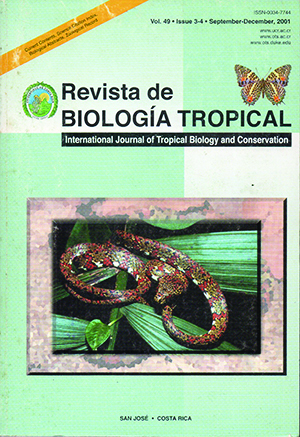Abstract
Previous reports showed that the tepezcuintle (Agouti paca) is commonly infested by gastrointestinal parasites (GIP), mainly Eucoccidiida and helminths. However, there is no available information on the frequency of those parasites and their faecal egg excretions at different moments during the year. These information would provide a valuable baseline for the establishment of control strategies against GIP in tepezcuintles under captivity. The objectives of the present study were to determine the prevalence of GIP orders and genera that infest tepezcuintles under captivity and, to describe the dynamics of faecal egg and oocyst excretion in a year. Ten tepezcuintles were sampled (faeces) twice every month for twelve months. The faecal samples were processed by the flotation and McMaster techniques. Two orders of parasites were determinated: Strongylida and Eucoccidiida. Two genera of nematodes were also determinated: Strongyloides and Trichuris. The prevalence of Strongylida eggs, Eucoccidiida oocysts and Trichuris sp. eggs reached 10-20 % of animals in certain months. The most important genus was Strongyloides, found in 60 to 100 % of the animals year round. The average excretion of eggs in the group was 45 to 372 eggs per gram. Tepezcuintles kept under captivity in Yucatan are parasited with Strongyloides sp throughout the year, but only occasionally had oocysts of Eucoccidiida and eggs of Strongylida and Trichuris sp.Comments

This work is licensed under a Creative Commons Attribution 4.0 International License.
Copyright (c) 2001 Revista de Biología Tropical
Downloads
Download data is not yet available.


